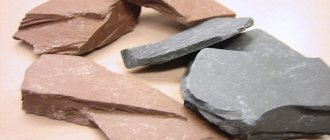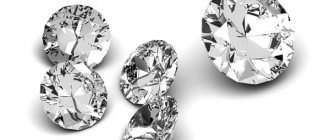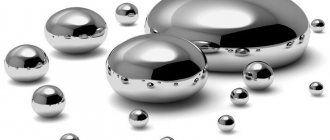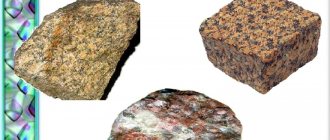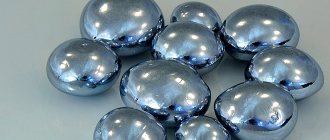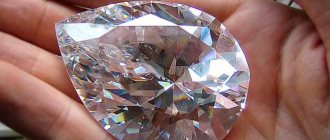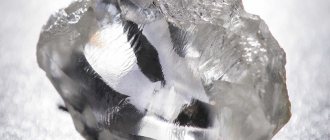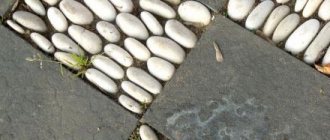Scientists have been interested in the crystal lattice of diamond for a long time. Thanks to its characteristics, the stone has special properties and value. There are allotropic modifications used in industry, electronics, medicine, astronautics, and aviation. Currently, the industry for creating artificial diamonds is developing, but it is expensive.
Diamond, characteristics, description, crystal lattice, chemical composition:
Diamond (from ancient Greek ἀδάμας “indestructible”, through Arabic ألماس ['almās] and Turkish elmas) is a mineral, a cubic allotropic form of carbon. The chemical formula of diamond is C.
Diamond
is a natural mineral consisting of carbon and crystallizing in the cubic system.
Along with graphite and diamond, there are many more allotropic forms of carbon. For example, graphene, fullerene, carbon nanotubes, etc. The properties of these substances are completely different from each other.
Diamond is the hardest natural material on Earth.
Diamond is a rare, but at the same time quite widespread mineral. To date, diamonds have been found on all continents of the Earth, including Antarctica.
Diamond is a solid allotropic form of carbon whose atoms have a face-centered cubic crystal lattice. Moreover, each carbon atom in the diamond structure is located in the center of a tetrahedron, the vertices of which are the four nearest atoms.
Thus, in a diamond, each carbon atom is bonded to four other atoms. In diamond, the bonds are formed by sp3 hybrid orbitals. This connection is the strongest. It is the strong bond of carbon atoms and the absence of a free electron that explains the high hardness of diamond . Of all known substances, diamond also has the largest number of atoms per unit volume, making it both the hardest and least compressible.
Conversely, in graphite, another allotrope of carbon, each carbon atom is bonded to three similar atoms and has one free electron. In graphite, interatomic bonds are formed by sp2 hybrid orbitals. Bonds between carbon atoms in graphite are formed in the same plane. The bonds between graphite planes are weak. This determines the high softness of graphite and the ability of graphite layers to easily separate (peel off) from each other.
Under normal conditions (i.e. room temperature and normal pressure), as well as high pressures, diamond can exist indefinitely. At room temperature and pressure, another solid form of carbon known as graphite is also a chemically stable form, but diamond almost never transforms into it. And only in a vacuum or in an inert gas at elevated temperatures - at 2000 oC, diamond gradually turns into graphite.
Diamonds come in completely different colors and shades: from steel gray, white to brown and black. Colorless and transparent stones are rare. This is because natural diamond may contain small amounts of defects and impurities (about one per million carbon atoms). Small amounts of defects or impurities color a diamond blue (boron impurities), yellow (nitrogen impurities), brown (lattice defects), green (radiation effects), purple, pink, orange, red or gray. At the same time, a chemically pure and structurally perfect diamond is transparent and has no tint or color.
Diamond also has relatively high optical dispersion (the ability to scatter light of different colors).
Diamond's hardness and high optical dispersion contribute to its use as a gemstone. Unlike many other gemstones, it is well suited for daily wear due to its scratch resistance. A diamond can only be scratched by
A cut diamond is called a diamond.
Diamond is made of pure carbon. In small quantities it contains various impurities of other chemical elements (boron, nitrogen, aluminum, silicon, calcium, magnesium, etc.).
Methods of using the substance
Processed and faceted high-quality stones - diamonds with an ideal crystal lattice and composition (without impurities or defects) - are used for the production of jewelry. This is the most profitable area of application of the mineral.
Defective stones are used for other needs:
- production of bearings, drills;
- use in electronics and telecommunications;
- production of mechanisms from diamond powder;
- framing of grinding wheels;
- creation of optical lenses;
- use as abrasives;
- creation of quantum computers;
- application in nuclear energy;
- production of medical instruments.
Formation and origin of diamonds:
Most natural diamonds are between 1 billion and 3.5 billion years old. Many of them were formed at depths of 150 to 250 kilometers in the Earth's mantle, although some formed at depths of about 800 kilometers.
Under high pressure and temperature, carbon-containing liquids dissolved the minerals in the rock and replaced them with diamonds.
Diamonds were formed from this liquid either by reduction of oxidized carbon (such as CO2 or CO3) or by oxidation of a reduced phase such as methane.
Much later (tens - hundreds of millions of years ago) they were brought to the surface as a result of volcanic eruptions and deposited in igneous rocks known as kimberlites and lamproites.
How to get a gemstone from graphite
To obtain synthetic analogues, high temperature and pressure in special installations are required. Of course, the pressure created by geological transformations is not comparable in duration. It was believed that it was almost impossible to obtain gemstones from graphite due to technical difficulties. The first artificial gemstones were obtained weighing less than one carat (1 carat = 0.2 g) and were even cut, but obtaining heavier specimens encountered certain difficulties. The fact is that complex installations are not able to withstand high temperatures and pressure for a long time, and growing half-carat samples takes time.
With the development of technical progress, two common technologies for obtaining synthetic samples are known: HPHT (high pressure high temperature) and CVD (chemical vapor deposition). The first one stands for “high pressure high temperature”, and the second method is “chemical vapor deposition”.
The largest using HPHT technology was obtained in Russia (32.26 carats) and was cut. The weight of the diamond was 10.02 carats.
Later, the largest artificial CVD analogue in the world was created in China, weighing 46.2 carats (cut diamond - 12.75 carats). Both specimens are confirmed by a certificate from the International Gemological Institute (IGI) in Hong Kong.
Mechanical, optical, chemical and other properties of diamond:
– Diamond is a solid form of pure carbon. Hardness on the Mohs scale 10,
– the hardness of a diamond depends on its purity, the absence of crystal lattice defects and orientation. Hardness is higher for flawless, clear crystals oriented along the longest diagonal of the cubic diamond lattice. Therefore, diamonds can only be scratched and processed by other diamonds,
– Of all known substances, diamond has the largest number of atoms per unit volume, so it is both the hardest and least compressible. Diamond has the lowest compression ratio,
– has a high density of 3.47-3.55 g/cm³,
– is brittle and breaks easily,
– conchoidal fracture,
– has a high refractive index and relatively high optical dispersion (the ability to scatter light of different colors). These properties make the edges applied during diamond processing shine, playing in the light,
– has the highest thermal conductivity among all solids 900-2300 W/(m K). Because of this, the diamond feels cold to the touch.
– diamond has a very low coefficient of friction on metal,
– has the highest modulus of elasticity,
– in air, diamond burns at 850-1000 °C, and in a stream of pure oxygen it burns with a faint blue flame at 720-800 °C, completely turning into carbon dioxide,
– under the influence of sunlight, as well as under the influence of cathode, ultraviolet and x-rays, diamonds begin to luminesce - glow in different colors. It is this specific property of diamond that allows it to be identified in the rock,
– the surface of diamond is hydrophobic and lipophilic , i.e. diamond is not wetted by water, but is well wetted by oil and fat. This property is used to distinguish a diamond from a fake. The fat on the fake does not completely wet the surface, but collects in small droplets. In addition, a diamond smeared with grease sticks to the glass, but a fake does not,
– diamonds are chemically stable. At room temperature they do not react with acids and alkalis. The surface of a diamond can only oxidize at air temperatures above 850 °C. Diamond also reacts with fluorine gas at temperatures above 700 °C,
– the refraction of diamond is such that if you place a colorless crystal on a page with printed text, you will not be able to read what is written. This characteristic of a diamond allows you to distinguish a fake from an original. Also, if you look through a diamond at the sun, you will only see a dim point,
– under the influence of radioactive radiation, the diamond changes color to a rich green color.
MORPHOLOGY
Diamond morphology is very diverse. It occurs both in the form of single crystals and in the form of polycrystalline intergrowths (“board”, “ballas”, “carbonado”). Diamonds from kimberlite deposits have only one common flat-faceted shape - the octahedron. At the same time, diamonds with characteristic curved shapes are common in all deposits - rhombic dodecahedroids (crystals similar to a rhombic dodecahedron, but with rounded edges), and cuboids (crystals with a curved shape). As experimental studies and the study of natural samples have shown, in most cases, dodecahedroid-shaped crystals arise as a result of the dissolution of diamonds by kimberlite melt. Cuboids are formed as a result of the specific fibrous growth of diamonds according to the normal growth mechanism.
Cullinan diamond broken into 9 parts
Synthetic crystals grown at high pressures and temperatures often have cube faces and this is one of their characteristic differences from natural crystals. When grown under metastable conditions, diamond easily crystallizes in the form of films and columnar aggregates. The sizes of the crystals vary from microscopic to very large, the mass of the largest diamond, “Cullinan”, found in 1905. in South Africa 3106 carats (0.621 kg). Several months were spent studying the huge diamond, and in 1908 it was split into 9 large pieces. Diamonds weighing more than 15 carats are rare, but diamonds weighing over a hundred carats are unique and are considered rarities. Such stones are very rare and often receive their own names, world fame and their special place in history.
Physical properties of diamond:
| Indicator name: | Meaning: |
| C–C bond length, nm | 0,15 |
| Density, g/cm2 | from 3.47 to 3.55 |
| Melting point (at a pressure of 11 GPa), °C | 3700-4000 °C |
| Thermal conductivity, W/(m K) | from 900 to 2300 |
| Refractive index | from 2.417 to 2.419 (yellow), in other colors - from 2.402 (red) to 2.465 (purple). |
| Dispersion | 0,0574 |
| Hardness (Mohs scale) | 10 |
| Hardness, GPa | from 70 to 150 |
Diamond cut:
The main types of diamond cuts are:
– round (with a standard number of 57 edges),
– fancy, which includes such types of cuts as “oval”, “pear”, “marquise”, “princess”, “radiant”, “heart”, “square”, “emerald”, “triangle” and other types.
The shape of a diamond's cut depends on the shape of the original diamond crystal .
Ionic type
Oppositely charged ions are located at nodes that create an electromagnetic field that characterizes the physical properties of a substance. These will include: electrical conductivity, refractoriness, density and hardness. Table salt and potassium nitrate are characterized by the presence of an ionic crystal lattice.
Don't miss: the mechanism of metal bond formation, specific examples.
